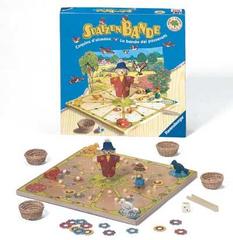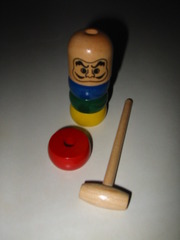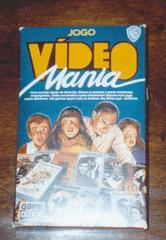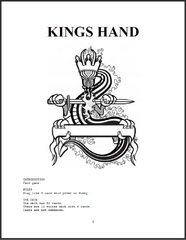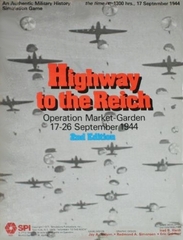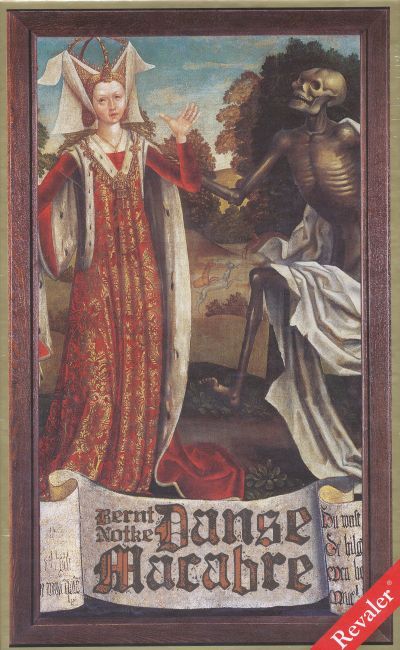
Danse Macabre
-
Description
2-player game based on famous painting fragment by Bernt Notke situated in Niguliste Museum, Tallinn, Estonia.
One player takes the role of god, other player takes the role of Devil. Then players compete to earn more dancers' souls.
They bet for every soul and peek bets of opponent or secret dancers' cards.
The player who owns the more souls in the end of the game is the winner.Components:
- Gameboard
- 6 Secret dancers
- God's carddeck
- Devil's carddeck
- Coin
Danse Macabre board game is designed for two players, one of which has a role of God and the other – role of Devil. Roles are assigned by toss-up. Each player needs to get as many souls of the Death Dancers as possible. More important character has more points.
To win the soul God and Devil place bets in turns, peep into each other’s bets or Hidden dancers cards and try to make each other pay as much as possible.
In the end of the game souls of the Dancers are looked at, points are summarised and winner is announced. Dance of the Death can be won by God or by Devil – whoever’s in luck!
Danse Macabre
Workshop of the master
Bernt Notke in Lübeck
Late 15th century
160 × 750 cm
Oil and tempera on canvas
The subject of the danse macabre was very popular in medieval art and literature. One of the reasons was the plague epidemic in the middle of the 14th century, which was called the Black Death and devastated the whole of Europe. The image of Death depicted as a skeleton dancing with people of different status was meant to remind viewers of the transience of earthly matters and summon them to reflect on the inevitability of death – memento mori! The mortals in the images were arranged according to status, beginning with the mightiest, the pope and the emperor, and ending with the lowest, the peasant or a small baby. The images illustrated that in the face of Death, everyone was equal, regardless of status, wealth, occupation or age.
The ‘Danse macabre’ in the Niguliste Museum in Tallinn is well-known around the world. It was painted by the famous master from Lübeck, Bernt Notke (ca. 1430/40–1509). Unfortunately only the first fragment, with 13 figures, has survived. It is not known how many figures the painting originally had or who commissioned it. It is thought that it was donated by a wealthy person (probably a merchant), guild or confraternity. The first reference to the ‘Danse macabre’ in the St Nicholas Church was in 1603. In the 17th century, it was located in the chapel of St Anthony (in the Middle Ages it was called the chapel of St Matthew) and it is likely that the painting was initially commissioned for this chapel. The chapel of St Matthew was enlarged in 1486–1493, so we can assume that ‘Danse macabre’ was ordered from Lübeck after the completion of this reconstruction work. The dating of the ‘Danse macabre’ to the late 15th century is also supported by the style of clothing and the verses on the lower side of the painting. The first character in the painting is the Preacher, followed by Death playing the bagpipes, Death with a coffin, the Pope, Death, the Emperor, Death, the Empress, Death, the Cardinal, Death, the King and Death. At the end of the picture, one can see a fragment of a Bishop’s robe. The dialog in verse between Death and mortals is written on the lower side of the painting.
Bernt Notke’s ‘Danse macabre’ is the internationally most well-known medieval artwork in Estonia, and every year thousands of people come to see it. The painting is of exceptionally high artistic quality: particularly expressive are the faces of the Pope and the Emperor. The painting is also unique because it is the only surviving medieval danse macabre painted on canvas.
-
Details
Ages: 9 and upArtist: Asko KunnapDesigner: Priit Isok, Asko KünnapMechanics: Hand ManagementPublisher: RevalerTime: 30 minutesYear: 2010

